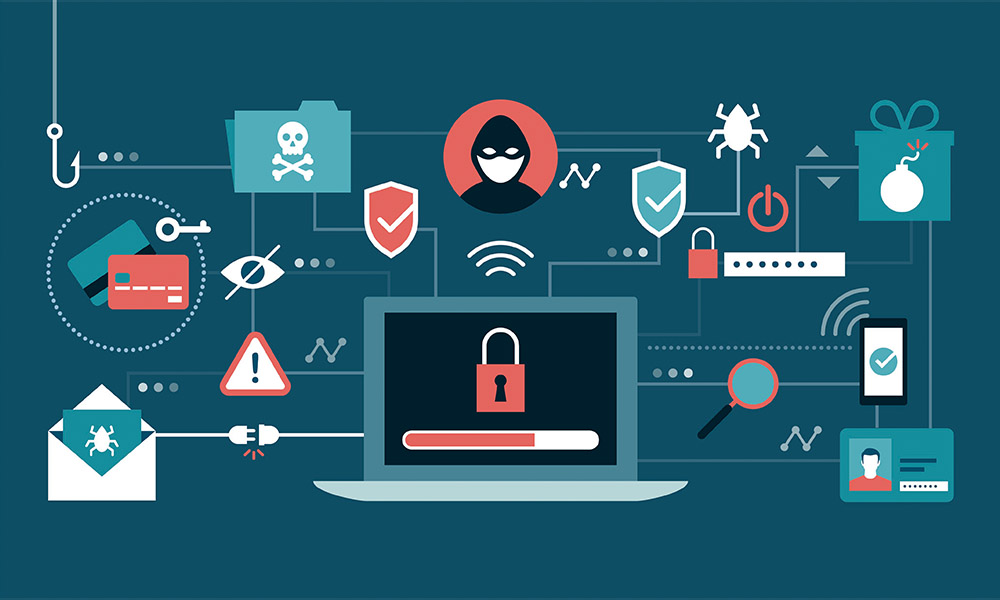Cybersecurity became a full new ball game for a few IT departments when coronavirus forced businesses into enabling employees to figure from home, many of them for the primary time. Risk-averse organizations will have it covered with long-standing business continuity plans; others may have been smart enough to determine protocols and processes within the origin of the lockdown, but more are struggling to place something in situ after the event. One certainty in uncertain times is that hackers and complicated cybercriminals are looking to use the explosion in home working and vulnerabilities that are inevitable when unexpected arrangements replace the carefully monitored activity that typically protects a business. Here’s a list of the top 5 things that can help you secure your home cyber experience.
Make a password management tool and make sure you use strong passwords: You may have heard that strong passwords are critical to online security. Use this link (https://iprouterlogin.com/192-168-2-1/ ) to know about the ip logins and passwords. The reality is passwords keep your hackers out of your data. If you want to make it easy to manage your passwords, try to use a password account vault or a password management tool. According to the National Institute of Standards and Technology’s (NIST)2017 new password policy framework, you should consider:
Dropping the crazy, complex mixture of upper case letters, symbols, and numbers. Instead, go for something that is more user-friendly but at least eight characters and a maximum of 64 characters.
Do not use the same password twice.
Always reset your password in case you forget it and change it at least once in a year for general safety.
Your password should contain at least one lowercase letter, one uppercase letter, one number, and four symbols but not the following &%#@_.
Set your password that is easy to remember and never leave any hint for the public or the hackers to hack it.
2. Use anti-virus protection and firewall: Anti-virus (AV) protection software has been the foremost prevalent solution to fight malicious attacks. Antivirus software stops any kind of viruses from entering your device and hampering it. Take an AV software from a trusted vendor and use only that software for your device. Using a firewall is additionally important when defending your data against malicious attacks. A firewall helps classify hackers, viruses, and other malicious activity that happens over the web and determines what traffic is allowed to enter your device. Your router should even have a firewall inbuilt to forestall attacks on your network.
3. Keep your software up to date: Ransomware attacks were a serious attack vector of 2017 for both businesses and consumers. One of the foremost important cybersecurity tips to mitigate ransomware is patching outdated software, both software systems, and applications. Here are some quick tips to induce you started:
Turn on automatic system updates for your device
Make sure your desktop browser uses automatic security updates
Keep your applications program plugins like Flash, Java, etc. updated
4. Learn about Phishing Scams – be very suspicious of emails, phone calls, and flyers: In a phishing scheme attempt, the attacker poses as someone or something the sender isn't to trick the recipient into divulging credentials, clicking a malicious link, or opening an attachment that infects the user’s system with malware, trojan, or zero-day vulnerability exploit. This often ends up in a ransomware attack. 90% of ransomware attacks originate from phishing attempts. A few important cybersecurity tips to recollect about phishing schemes include:
Bottom line – Don’t open email from people you don’t know
Know which links are safe and which don't seem to be – hover over a link to find where it directs to
Be suspicious of the emails sent to you generally – look and see where it came from and if there are grammatical errors
Malicious links can come from friends who are infected too. So, be extra careful!
5. Protect Your Sensitive Personal Identifiable Information (PII): Personal Identifiable Information (PII) is any information that may be employed by a cybercriminal to spot or locate a person. PII includes information like name, address, phone numbers, date of birth, Social Security Number, IP address, location details, or other physical or digital identity data. Your MasterCard information should be protected by companies if they follow the PCI DSS standards.
In the new “always-on” world of social media, you ought to be very cautious about the data you include online. it's recommended that you just only show the very minimum about yourself on social media. Consider reviewing your privacy settings across all of your social media accounts, particularly Facebook. The risk of social security will increase if you add your birth date, home address, or other personal identification information. Hackers use this information to their advantage!
So here are few tips that can help you secure your home cybersecurity. Do give it a read and apply it.










